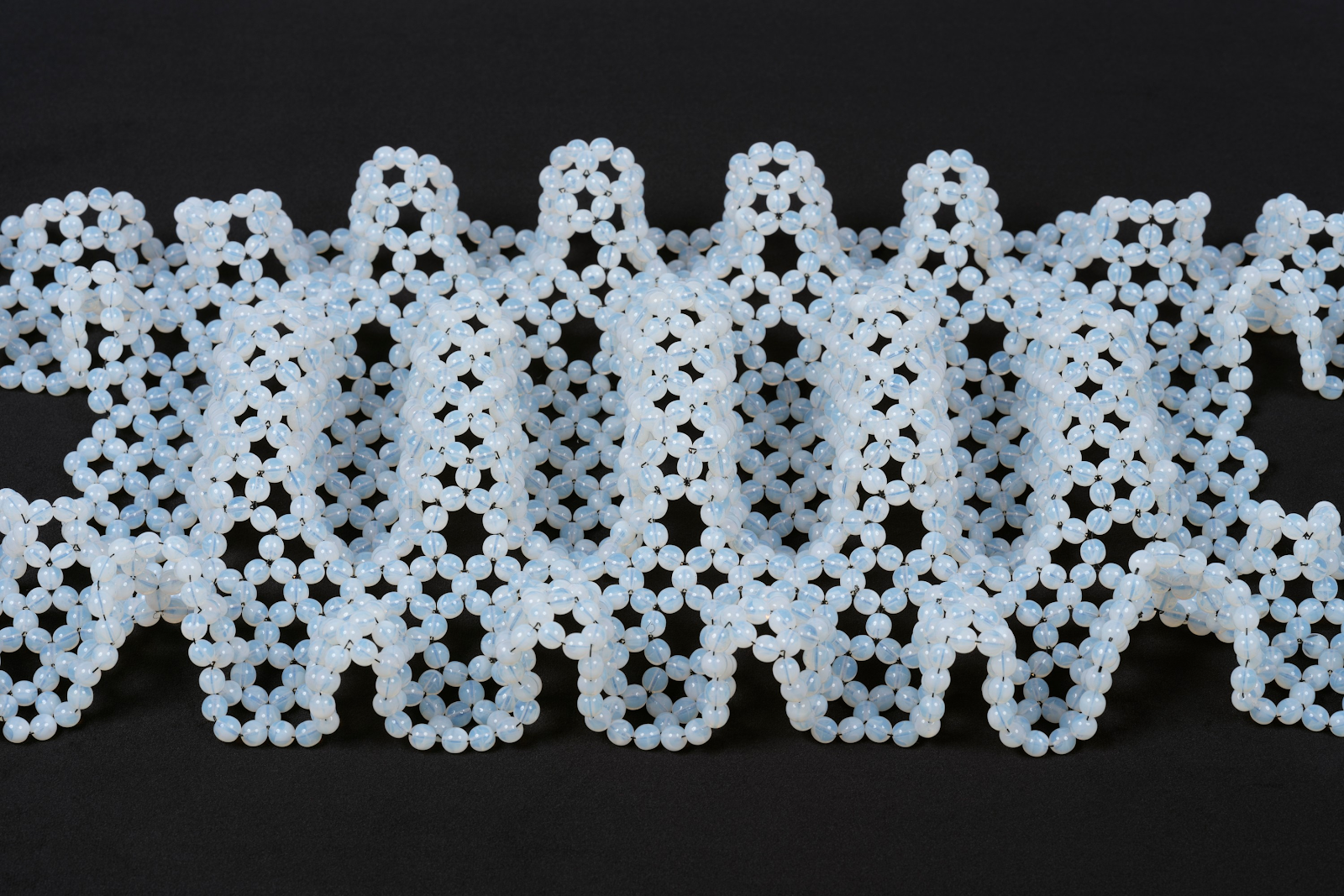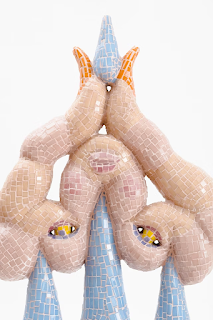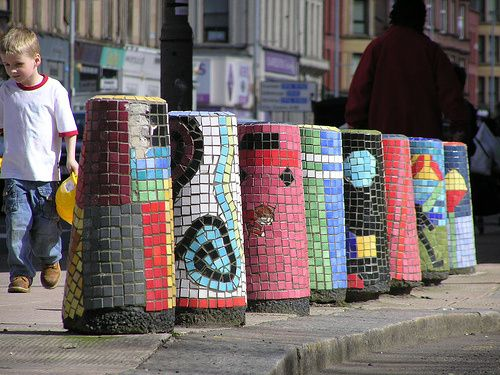Tauba Auerbach: Extended Object (detail), 2018: Acrylic
Tauba Auerbach (pronoun 'they') reminds us of how important craft is to an understanding of how the world works. At one point, when they were younger, they worked as a sign writer and this experience highlighted for them the importance of hand skills and how the body builds up knowledge about how materials work and how to be sensitive to them. Auerbach also has a long commitment to unravelling a parallel scientific understanding of the world and questions how we really understand the world we live in. Is it through an activity such as science, or is it through the way we encounter the world through the materials we use? Auerbach suggests that in shaping materials as craftspeople, we understand the world in a deeply embodied way, they then use this embodied understanding of craft, to revisit certain scientific principles and to rethink them as material structures. The craft of drawing is central to this process and they remind us of how vital an awareness of body control is to the making of any image.
Tauba Auerbach: Org: Glass, nylon coated steel cord
There is a particular set of crafts associated with bead construction and this is associated with religious objects, such as prayer beads and also, the visualisation of atomic forms, whereby atoms are grouped into certain configurations which can be modelled by using beads. Auerbach has learnt the skills of bead construction from someone who had been making these scientific models for some time and has then gone on to create her own models using the skills learnt. We have looked at these issues before; Daina Taimina for instance used crochet as a way of modelling hyperbolic space. She taught herself crochet and in doing so her levels of understanding geometry were raised, as it was much easier to see how a line, generated by a fold, could operate in hyperbolic space; especially when you saw these structures develop as a result of a series of hand movements.
Tauba Auerbach: Ligature: 2019
Lines of force illustrating electromagnetic action
Auerbach's revisiting craft techniques includes marbling. You might have done this yourself because people often do this to make endpapers for books. A very basic way to do this is to float oily inks onto water and to develop patterns by touching the ink drops with a stick or a broken comb. Auerbach makes marbled surfaces on a much larger scale than the normal amateur would, (see this video link) and makes a connection back to scientific principles in relation to the material interactions involved.
What is interesting here is that some of the crafts Auerbach is using have a history of association with amateur crafts and outsider art making. They remind us that everything is up for grabs when it comes to developing ideas, especially areas of endeavour that are usually dismissed as being naff or not very creative. Perhaps browse through the crafts section of your local bookstore and look at that wide range of activities that includes everything from crochet to knitting, via marbling to mosaic, and papier-mâche to decoupage. Look at how Zsófia Keresztes takes the idea of using mosaic to cover an object and elevates it from a craft into art. Keresztes had an impressive exhibition of her sculptures at the last Venice Biennale, all of which had a surface finish using the same type of mosaic techniques that we might find forming some sort of street decoration.
Zsófia Keresztes
Kathy Prescott Parker
Patterning, ties, entanglements and knots More on the work of Daina Taimina
An excellent Art21 video of Tauba Auerbach introducing their work











No comments:
Post a Comment